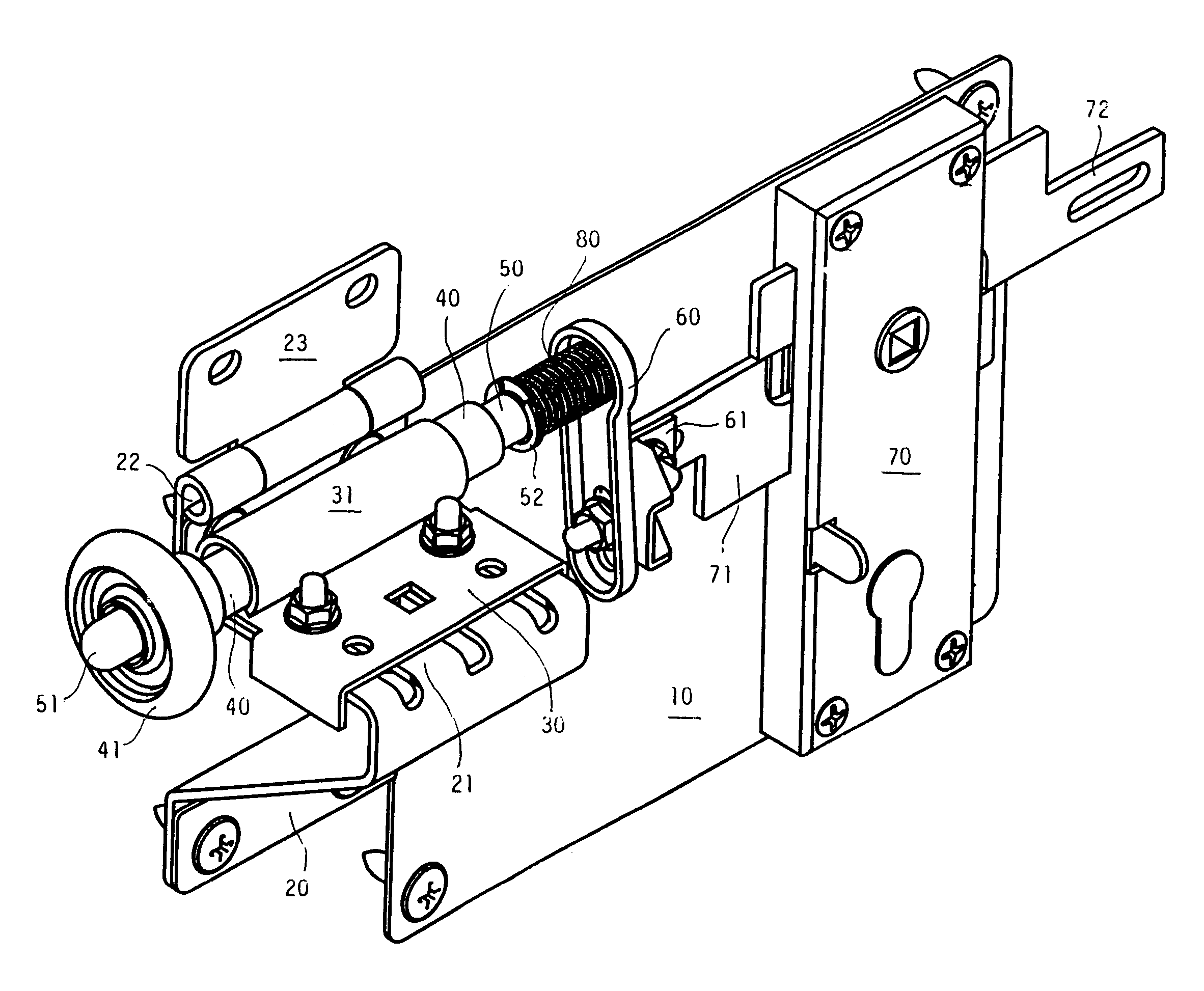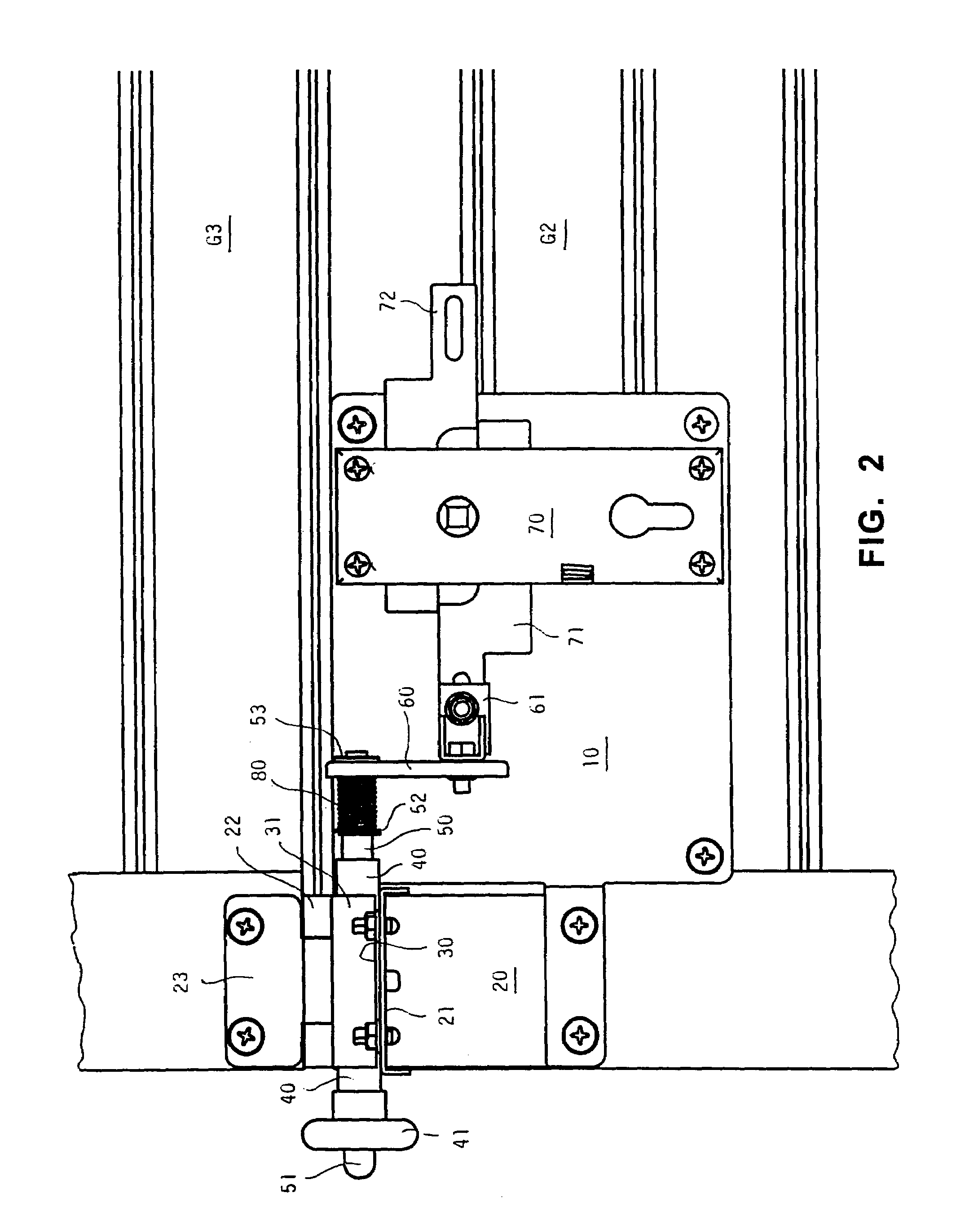Latch for section doors and the like, and operating sets including said latch
a technology for latches and section doors, applied can solve the problems of difficult embodied, difficult operation, and inability to be used in the field of latches,
- Summary
- Abstract
- Description
- Claims
- Application Information
AI Technical Summary
Benefits of technology
Problems solved by technology
Method used
Image
Examples
Embodiment Construction
[0027]With reference to FIG. 3, in the following will be clarified the main problem, already mentioned in the preamble, that is noticed in the section doors with respect to the latch. A section door, of which only a portion is diagrammatically represented in profile in FIG. 3, comprises two side guide bars, only one of which is shown and includes a vertical branch G1, defining the operative position of the section door when closed, a upper horizontal branch G2, defining a disappearance position of the section door when open, and a curved connection branch G3, located between said vertical branch G1 and said upper horizontal branch G2. A number of section door elements E1, E2, E3, E4 are mutually connected by means of hinges C1, C2, C3, and they are provided at their end portions, near the hinges, with small running wheels R1, R2, R3 engaged in the side guide bars. The shape in cross section of a guide bar G1 and the engagement therein of a small running wheel R1 are diagrammatically...
PUM
 Login to View More
Login to View More Abstract
Description
Claims
Application Information
 Login to View More
Login to View More - R&D
- Intellectual Property
- Life Sciences
- Materials
- Tech Scout
- Unparalleled Data Quality
- Higher Quality Content
- 60% Fewer Hallucinations
Browse by: Latest US Patents, China's latest patents, Technical Efficacy Thesaurus, Application Domain, Technology Topic, Popular Technical Reports.
© 2025 PatSnap. All rights reserved.Legal|Privacy policy|Modern Slavery Act Transparency Statement|Sitemap|About US| Contact US: help@patsnap.com



